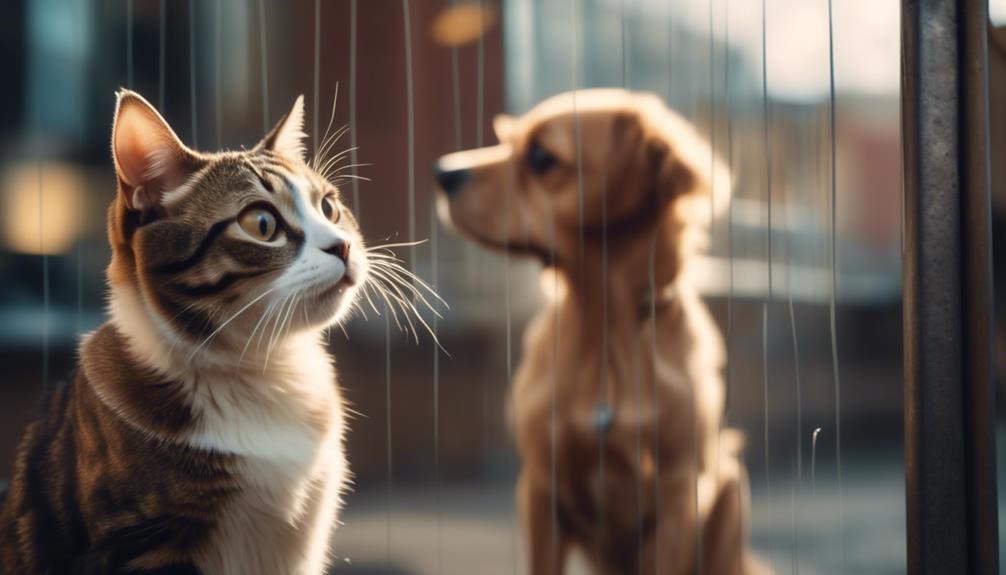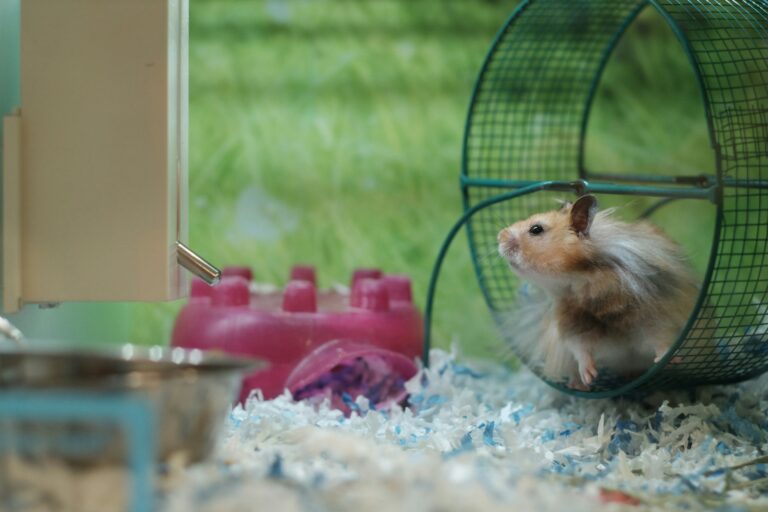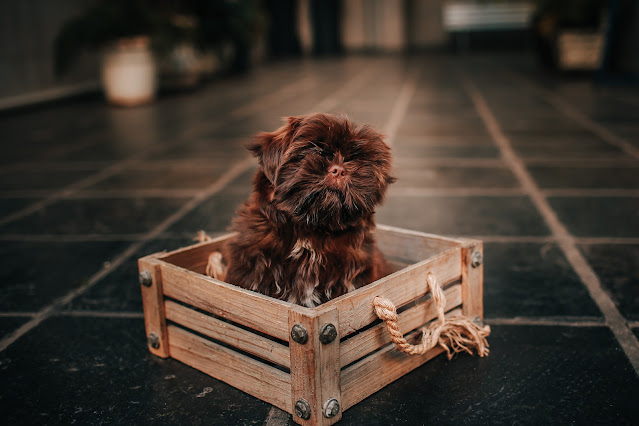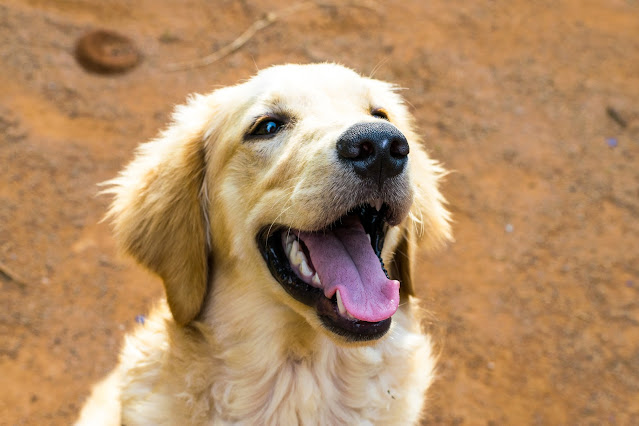Master How Do I Introduce A New Pet To My Existing Pets

How Do I Introduce A New Pet To My Existing Pets? Like a delicate dance between unfamiliar partners, introducing a new pet to your existing furry companions requires finesse and careful steps. You want to create a harmonious environment where all pets feel comfortable and accepted. But how exactly do you navigate this intricate process? Fear not, for in this discussion, we will guide you through the necessary strategies and techniques to ensure a smooth and successful introduction. Stay tuned to discover the secrets of bringing harmony to your pet-filled abode.
Assessing Pet Compatibility
Assessing pet compatibility is an essential step when introducing a new pet to your existing furry family members. Before bringing a new pet into your home, it’s important to consider the personality and preferences of your current pet. Different animals have different temperaments, and not all pets will get along. Assessing compatibility can help prevent any potential conflicts or stress between your pets.
To assess pet compatibility, start by creating separate areas for your new pet and your current pet. This will allow them to get used to each other’s scents and presence without direct contact. Gradually introduce the pets to each other under controlled circumstances. Exchange bedding between the pets to familiarize them with each other’s scents before face-to-face introductions.
When it’s time for the pets to meet, choose a neutral territory like a park or a friend’s house. This will help prevent territorial behavior. Monitor their interactions closely, and use positive reinforcement to encourage calm and friendly behavior. Reward them with treats or praise when they display good behavior towards each other.
During the introduction process, it’s important to maintain a normal routine for your pets. Stick to their usual feeding and exercise schedule to provide stability during this transition. Be patient, as it may take time for your pets to adjust to each other. If you encounter any difficulties or concerns, don’t hesitate to seek professional help from a veterinarian or animal behaviorist.
Assessing pet compatibility is crucial when introducing a new pet into your home. By considering the personality and preferences of your current pet, using separate areas initially, and gradually introducing them under controlled circumstances, you can help ensure a smooth and successful integration of your furry family members.
Establishing Separate Spaces
To ensure a smooth and successful introduction of your new pet to your existing furry family members, it is important to establish separate spaces within your home. This will provide each pet with their own designated area where they can feel safe and secure. One effective way to do this is by utilizing baby gates to initially keep the new and existing pets in separate spaces. This allows for a gradual introduction, giving them time to adjust to each other’s presence.
When creating these separate spaces, it is essential to ensure that each area contains all the necessary amenities. This includes food and water dishes, litter boxes (if applicable), and comfortable resting areas. By providing these essentials, you are promoting a sense of security and comfort for each pet.
To further facilitate the introduction process, allow the pets to become familiar with each other’s scents. This can be done by letting them sniff each other under a closed door. This gradual introduction allows them to become accustomed to each other’s presence without direct contact, reducing the chances of potential tension or aggression.
Once the pets seem comfortable with each other’s scents, you can gradually remove the barriers and allow them to interact under supervision. It is important to maintain a controlled environment during this process to ensure the safety of all pets involved. Observe their body language and behavior closely, and intervene if necessary.
Utilizing Scent Introduction
To successfully introduce a new pet to your existing furry family members, it’s important to utilize scent introduction techniques. By exchanging bedding between pets, you can familiarize them with each other’s scents, reducing anxiety and promoting a sense of familiarity. Gradually introducing scents helps reduce stress and allows pets to acclimate to each other’s presence, increasing the chances of a positive and peaceful introduction.
Scent Swapping Benefits
Utilizing scent introduction through scent swapping can greatly benefit the process of introducing a new pet to existing pets. By exchanging bedding between pets, you can familiarize them with each other’s scents. This helps reduce anxiety for both pets and allows them to become more accustomed to each other’s presence. When pets finally meet face-to-face, scent swapping helps create a smoother transition. It promotes a sense of familiarity and comfort, leading to a more harmonious introduction. Scent swapping facilitates a gradual and positive introduction, reducing stress and potential conflicts between pets. So, if you’re introducing a new pet to your existing furry family members, consider utilizing scent swapping as it can provide numerous benefits for a successful introduction.
Gradual Scent Exposure
Exchanging bedding or toys between pets gradually introduces their scents to each other, reducing anxiety and promoting a smoother transition when they finally meet face-to-face. Gradual scent exposure is a practical and effective method to introduce a new pet to your existing pets. By swapping their belongings, you allow them to become familiar with each other’s scents, creating a sense of comfort and familiarity.
This helps to reduce any potential anxiety or aggression during the first meeting. Gradual scent exposure allows pets to form positive associations with one another before direct interactions occur. This method is crucial in facilitating a peaceful introduction and cohabitation between your pets. So, take the time to exchange their bedding or toys, and let the gradual scent exposure work its magic in creating a harmonious environment for all your furry friends.
Positive Scent Association
Incorporate positive scent association by gradually introducing scents between your pets, allowing them to become familiar with each other’s presence and reducing anxiety. Start by exchanging bedding between your pets to familiarize them with each other’s scents. This simple step can help reduce anxiety for both pets and create a smoother transition when they finally meet face-to-face.
You can also use towels or items that have been in contact with each pet to gradually introduce their scents. By doing this, you are creating a calm and familiar environment for your pets, which helps reduce the stress and anxiety associated with the introduction process. Positive scent association is an effective way to promote a sense of familiarity and comfort, ultimately leading to better behavior when introducing a new dog to your existing pets.
Meeting in Neutral Territory
When introducing a new pet to your existing pets, it’s important to choose a neutral meeting place. This can help prevent territorial behavior and create a more relaxed environment for the initial introduction. Keep the dogs on leashes and reward calm and friendly behavior with treats. Gradually decrease the distance between the pets as they become more comfortable with each other, and closely monitor their body language and behavior to ensure a positive interaction.
Neutral Meeting Place
To introduce a new pet to your existing pets, it is crucial to find a neutral meeting place, especially for dogs. This neutral territory helps to prevent any territorial aggression that may arise when introducing pets in their established territories. When it comes to introducing dogs and cats, it is important to avoid introducing the cat directly into a new environment.
Instead, keep a safe distance during the initial meeting and allow them to see and sniff each other without direct contact. Gradually decrease the distance over time as they become more comfortable in each other’s presence. By providing a neutral meeting place, you are giving your pets a chance to establish a positive association and build a foundation for a harmonious relationship.
Calm Introductions
For a successful introduction between new and existing pets, it is important to arrange a calm meeting in neutral territory. Choosing a neutral location, like a park, helps prevent territorial conflicts. Keep your dogs on leashes, allowing them to see and sniff each other from a distance without direct contact.
Use positive reinforcement, such as treats and a happy voice, to create a positive association between the dogs. While monitoring their body language for signs of comfort, let the dogs determine the pace of the introduction. Repeat this process often, gradually decreasing the distance between the dogs as they become more comfortable. By following these calm introductions, you can help your new pets integrate smoothly into your existing pet family.
Supervised Initial Interactions
To ensure a successful introduction between new and existing pets, the next step is to supervise their initial interactions by meeting in neutral territory. Choose a park or another location where both pets can feel at ease. Keep a safe distance during the first meeting, allowing them to see and sniff each other without direct contact. It’s crucial to monitor their body language closely and interrupt any negative behaviors. Reward relaxed interactions with treats and use a happy, friendly voice to create a positive atmosphere. Gradually decrease the distance between the pets over time, letting them determine the pace. Walk them side by side under close supervision. This supervised initial interaction is an important part of the introduction process.
Positive Reinforcement Techniques
When introducing a new pet to your existing pets, it is important to utilize positive reinforcement techniques to ensure a smooth and successful transition. Positive reinforcement involves rewarding your pets for exhibiting desirable behaviors, which helps them associate the presence of the new pet with positive experiences. By reinforcing positive behavior, you can create a harmonious environment for all your pets.
Firstly, it is crucial to reward your existing pets for their calm and accepting behavior towards the new pet. When they show curiosity or approach the new pet without aggression, offer them treats or praise to reinforce their good behavior. This will encourage them to continue their positive reactions and help build a positive association with the newcomer.
Additionally, it is important to introduce your new pet to your existing pets gradually, using positive reinforcement. Start by allowing them to interact through a gate or a barrier, where they can see and smell each other without direct contact. Reward both parties for remaining calm and relaxed during these initial interactions. Gradually increase their exposure to one another, always rewarding calm behavior and providing treats or praise.
During the introduction process, it is essential to monitor the interactions closely. If any signs of aggression or tension arise, separate the pets and try again later. Consistency is key, so be patient and continue reinforcing positive behavior throughout the process.
Maintaining Routine and Structure
To ensure a smooth and successful introduction of a new pet to your existing pets, it is essential to establish and maintain a consistent routine and structure. Dogs and cats thrive on routine, and sticking to a daily schedule for feeding, walking, and interaction can help minimize stress for all pets involved. Avoid making drastic changes to your pets’ routine during the introduction period, as this can disrupt their sense of stability and increase anxiety.
During this time, it’s important to spend one-on-one time with each pet to make them feel secure and prevent feelings of neglect. Give them individual attention, whether it’s through playtime, grooming, or simply snuggling on the couch. This will help reinforce the bond between you and your pets, reassuring them that they are still loved and valued.
In addition to individual attention, plan group activities to help your pets bond and create positive experiences together. For example, you can take them for walks together or engage them in interactive play sessions. This will allow them to gradually get used to each other’s presence and start building a positive association.
Practicing Patience With Both Pets
When introducing a new pet to your existing pets, it is crucial to practice patience with both animals. Understand that this process takes time and be prepared for initial challenges and setbacks. Use positive reinforcement to encourage calm and positive behavior, and remember to be patient as your pets acclimate to each other.
Slow and Steady Introduction
One effective way to introduce a new pet to existing pets is by practicing patience and taking the slow and steady approach. A slow and steady introduction allows both pets to become familiar with each other’s scents and presence without feeling overwhelmed. Start by placing the new pet in a separate room with a closed door, allowing the pets to sniff each other under the door.
This helps them get acquainted without direct contact. Use baby gates to create separate areas for each pet, providing comfortable amenities like litter boxes, food, and water dishes in each area. Gradually remove barriers when both pets seem comfortable, allowing supervised interactions. Be prepared for some initial challenges and setbacks, but with patience and time, your pets can develop a positive relationship.
Gradual Acclimation Process
Start the gradual acclimation process by allowing your pets to become familiar with each other’s scents and presence under a closed door. This initial step is crucial in introducing a new pet to your existing pets. By letting them sniff each other without direct contact, they will begin to recognize and accept each other’s presence. It is important to practice patience during this process, as it takes time for animals to adjust to new companions. Use positive reinforcement, such as treats and training activities, to encourage calm behavior during interactions.
Additionally, create a consistent daily schedule and spend one-on-one time with each pet to maintain stability and security. Remember to always use a happy, friendly voice and reward dogs with treats when they see each other in neutral territory. Following this gradual acclimation process will help ensure a successful introduction of your new pet to the existing ones.
Gradual Introductions at Home
To facilitate a smooth transition when introducing a new pet to your existing pets, it is advisable to gradually acclimate them to each other’s presence at home. This process, known as gradual introductions at home, can help minimize potential conflicts and ensure a harmonious environment for all pets involved.
One effective approach is to start by allowing the pets to sniff each other’s scents under a closed door. This initial interaction helps them become familiar with each other before any direct contact. After some time, when they seem comfortable, you can remove the barriers and let them see each other. This gradual exposure helps reduce anxiety and allows the pets to adjust at their own pace.
Another helpful technique is to exchange bedding between the pets. This helps familiarize them with each other’s scents, making the introduction process smoother. By doing so, you can reduce the chances of any territorial behavior and promote a more positive interaction.
When it comes to the actual face-to-face meeting, it’s important to find a neutral location. This could be a room that neither pet considers their territory. Allow the pets to see and sniff each other without direct contact, gradually decreasing the distance over time as they become more comfortable.
During these interactions, it’s crucial to use positive reinforcement and incorporate training activities. This helps redirect their focus and creates positive experiences for both pets. Additionally, sticking to a consistent daily schedule for feeding, walking, and interaction is essential. Spending one-on-one time with each pet will make them feel secure and prevent stress-related issues.
Monitoring Body Language and Reactions
When introducing a new pet to your existing pets, it is important to closely monitor their body language and reactions to ensure a smooth and successful integration. Monitoring body language and reactions can provide valuable insight into how the animals are feeling and whether they are comfortable with each other.
One key aspect to watch for is defensive or wary body postures. If any of the animals are displaying signs of aggression, such as raised fur, a stiff posture, or growling, it is important to immediately and calmly interrupt the negative behaviors. This can help prevent any escalation and keep the introduction process on the right track.
On the other hand, it is encouraging to see the animals looking at each other in a relaxed manner. In these moments, it can be helpful to offer treats as positive reinforcement. This can create a positive association between the animals and help them to form a bond.
As the introduction progresses, you can also monitor how comfortable the animals are with each other by shortening the distance between them. If they seem relaxed and at ease, you can gradually decrease the physical separation between them. However, if there is any sign of tension or discomfort, it may be necessary to take a step back and give them more space.
If the interaction becomes too intense or overwhelming for any of the animals, it is important to interrupt it by engaging the dog or cat in something else. This can redirect their attention and help diffuse any potential conflicts.
Seeking Professional Guidance if Needed
If you find that the introduction process is not progressing as smoothly as you had hoped, it may be beneficial to seek professional guidance from a dog trainer or animal behaviorist. While many pet owners are able to successfully introduce a new pet to their existing pets on their own, sometimes the process can be more challenging and require expert assistance.
A professional dog trainer or animal behaviorist can provide valuable insights and techniques to help facilitate a positive introduction and smooth integration. They have the knowledge and experience to assess the situation and provide tailored guidance based on the specific dynamics of your pets. They can help you understand and interpret your pets’ body language and behaviors, and offer effective strategies to address any conflicts or issues that may arise during the introduction process.
Seeking professional guidance can be particularly beneficial if you have a dog with a history of aggression or fear-based behaviors. These experts can assess the situation and provide guidance on how to manage and modify these behaviors to ensure the safety and well-being of all pets involved.
It’s important to remember that seeking professional guidance does not mean you have failed as a pet owner. On the contrary, it shows your commitment to the well-being and happiness of your pets. Professional dog trainers and animal behaviorists have dedicated their careers to understanding and improving the relationships between pets and their owners, and they can offer invaluable assistance during the introduction process.
How Do I Introduce A New Pet To My Existing Pets Frequently Asked Questions
How Long Does It Take for Pets to Get Used to Each Other?
It takes time and patience for pets to get used to each other. Gradual introductions in neutral territory, positive reinforcement, and monitoring closely can help. Overcoming challenges and seeking professional help if needed are important for a smooth transition.
What Is the 3 3 3 Rule for Dogs?
When introducing a new dog to your existing pack, it’s important to follow the 3 3 3 rule. Take it slow and allow gradual introductions, with supervised interactions. This will help ensure a smooth transition and positive relationships.
How Do You Introduce Pets to Each Other?
To introduce pets to each other, be prepared for common challenges and follow these strategies: 1. Create separate spaces initially. 2. Familiarize them with each other’s scents. 3. Find a neutral location for introductions. 4. Stick to a consistent daily schedule.
How Do You Introduce Two Animals?
To introduce two animals, start by creating separate spaces for them and let them sniff each other’s scents under a closed door. Gradually introduce them in a neutral location, using positive reinforcement. Stick to a consistent schedule and be patient.
Conclusion
In conclusion, introducing a new pet to your existing pets requires patience, careful planning, and gradual introductions. By assessing pet compatibility, establishing separate spaces, utilizing scent introduction, and meeting in neutral territory, you can help create a smooth transition. Positive reinforcement techniques, practicing patience, and monitoring body language and reactions are also essential. Remember, seeking professional guidance if needed can provide valuable assistance throughout the process. With these steps, you can successfully introduce a new pet to your existing furry family members.








